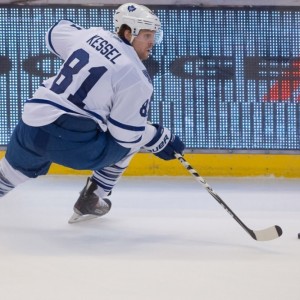
The start of the Pittsburgh Penguins 2015-2016 season is now only 90 days away. While that October 8 contest against the Dallas Stars may feel light years away at this point, it will not be long before head coach Mike Johnston and general manager Jim Rutherford will need to put their heads together in order to craft four lines and three defensive pairings that will allow the team to hurdle their failures of the previous year.
But with the recent blockbuster addition of forward Phil Kessel, the road to success gained a remarkable boost. But with that boost comes the added complexity of determining how Kessel will best fit into Johnston and Rutherford’s scheme. The Penguins are fortunate enough to have a surfeit of scoring forwards, but the team must not neglect the need for sound defense, even from their top-six forwards.
Fortunately, there are two guarantees that everyone can be assured of: Sidney Crosby will center the first line and Evgeni Malkin will center the second. But beyond that, the wings that will flank either superstars are in flux. It would seem likely that recent signee Sergei Plotnikov will be playing alongside his fellow Russian, Malkin. It would also seem reasonable to assume that Patric Hornqvist will, once again, play alongside Crosby. Their rapport was well-established last season and should see continued success in the time to come.
That leaves David Perron and Kessel to fill in the empty left-wing spot next to Crosby and the right-wing spot alongside Malkin. Considering that Perron is typically a left winger and Kessel is historically a right-winger, it might seem obvious to fit them into their natural positions. But one must also remember that both of these forwards have right-handed shots and could, presumably, easily switch to one side or the other.
Both players make compelling cases to play on the top line alongside Crosby and Hornqvist, though it can hardly be said that the one who drops to second line with Malkin and Plotnikov will be forced to mire in frustration. But it will be important for Johnston and Rutherford to try their best to feel out who will fit in best where.
Phil Kessel
The Case For Kessel
The acquisition of Phil Kessel was a bit of a coup for the Penguins. The 27-year-old forward from Madison, WI has been a goal scoring fiend throughout his whole NHL career. His 25 goal season in 2014-2015 was his first full season without 30 goals since the 2008-2009 season, and even that mild disappointment can be chalked up to the futility of his Toronto Maple Leafs.
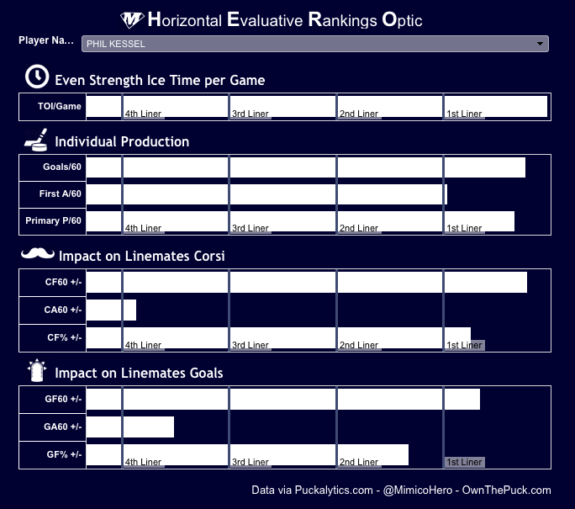
He is a prodigious generator of offensive, with a CorsiFor per 60 minutes of ice time of 57.68 over the past five seasons. Six seasons with Toronto produced 181 goals and 213 assists for a total of 394 points. That same time frame of six seasons also saw Kessel averaging .41 goals per game, alongside an average of .88 points per game.
All of this was achieved as a member of a Maple Leafs roster that, oftentimes, did not have the talent to match with Kessel’s abilities. When they performed their best, such as during the shortened 2012-2013 season in which the team secured their first playoff berth, Kessel was able to average in excess of a point per game.
If he is given the opportunity to support Crosby and Hornqvist with his point scoring prowess, Phil Kessel could be looking at achieving an extraordinary season of offense.
The Case Against Kessel
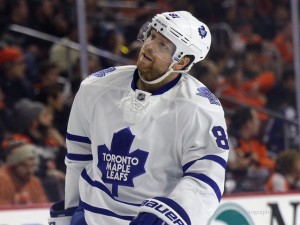
To argue against Kessel playing on the top line is as simple as highlighting his abysmal CorsiAgainst per 60 minutes: a shockingly bad 66.50 over the past five seasons. His play in his team’s defensive zone leaves a lot to be desired. His plus/minus rating has only cracked the positives once, in 2008-2009 when he was with the Boston Bruins. Last season, it was a cringeworthy -34.
However, it is worth noting that Kessel, who has been compared to another 27-year-old goal scoring winger who had previously been shipped out by Rutherford, James Neal, does have a substantially better CA/60 relative to the quality of competition than Neal. Over the past five seasons, Kessel’s mark stands at 5.45 (a figure that would actually be the best among Penguins players over the past 5 seasons), while Neal’s is -1.7.
Still, Neal has proven that he is capable of playing physical while Kessel has developed a reputation for being a tad on the soft side when it comes to throwing bodies around. And while the first line will likely be shielded by the presence of Kris Letang and Olli Maatta, the Penguins may find that having both the hit-shy Kessel and Crosby, who the team likely does want to see getting overly physical, on the same line would be a liability.
David Perron
The Case For Perron
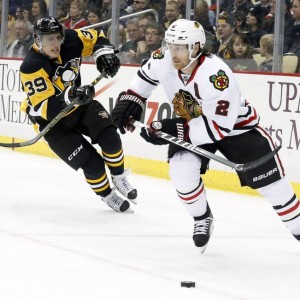
David Perron is a skilled forward with a wicked shot that, when it is given to opportunity to be deployed, can strike fear into the heart of any opponent. When he first joined Pittsburgh on January 3, he made himself quickly known with a beauty of a goal that was set-up by Crosby. It looked like the beginning of a beautiful partnership.
Unfortunately, the tail end of the 2014-2015 season was massively disappointing for Perron and the rest of the Penguins. Their offense tailed off as injuries forced the team to switch to a significantly more conservative dump-and-chase approach. Despite this dramatic slump, which featured Perron going pointless in 27 of his 43 regular season games with the Penguins, Perron still tallied 22 points with the team and finished the season with 41 total points. This was his lowest total in a full, 80-plus game NHL season, but it was still a reasonable total.
With the roster recuperated and a full season alongside Crosby or Malkin ahead of him, it would look like Perron is prepping to get back on track as a menace to goaltenders across the league. His CF/60 for the past five years is a solid 53.85, which, while lower than Crosby’s 64.07 and Hornqvist’s 57.03, is still a formidable rate of offensive production.
Furthermore, Perron has a rate of shot suppression comparable to that of both Crosby and Hornqvist, both of whom are forwards notably solid when on the defensive. Perron’s CA/60 of 52.21 over the past five seasons falls squarely between Crosby’s 52.80 and Hornqvist’s 51.84.
Perron’s offensive numbers may not be as gaudy as Kessel’s, but having had time on the top line, coupled with a solid all-around skill set make him a prime candidate for retaining his spot.
The Case Against Perron
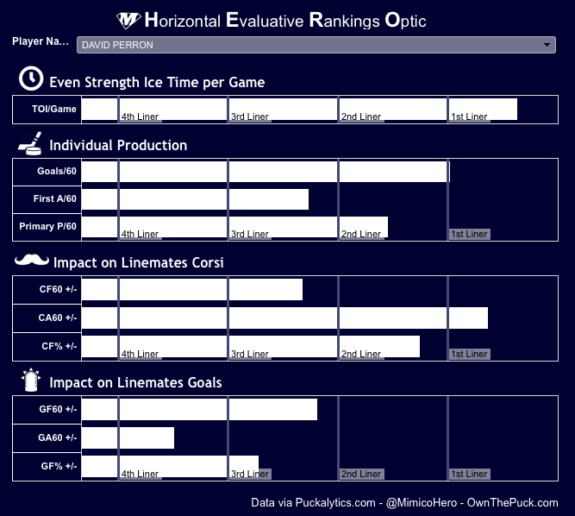
Perron’s CA/60 over the past five seasons is certainly an improvement over Kessel’s rather abysmal 66.50. However, his CA/60 relative to the quality of his competition reveals a slightly different narrative. His mark of -1.81 places him toward the bottom of the Penguins’ forward defensive talents.
And while his offense has shown remarkable promise throughout his career, it is tough to ignore that his CF/60 relative to the quality of his opponents over the past several seasons is markedly lower than that of Kessel. Perron’s managed to establish a mark of -0.67 as compared to Kessel’s 6.14, mark that will place him only behind Crosby, Malkin and Chris Kunitz over the past five years.
Kessel or Perron?
This question will likely only be answered for sure once the team has been able to practice together and assess their chemistry with one another. But when analyzing the statistical information, it would seem that the top line will feature Kessel on the wing, with Perron delegated to the second line.
Kessel’s top-flight offensive prowess, coupled with an underrated and previously hindered ability to provide defense, should take on new life along Crosby and Hornqvist. His extraordinary snap shot will likely end up on countless highlight reels through the season as he receives feeds from the NHL’s greatest player. And anything he or Crosby don’t put in will ideally be scooped up by Hornqvist in the dirty areas around the crease. The three of them should combine to be one of the most potent top lines in the league.
Meanwhile, Perron should find himself flourishing as he skates next to the two hulking Russian forwards, one new and one old. His solid CA/60 should help buoy the line’s defense, along with Malkin’s solid defensive numbers as well. Furthermore, Malkin’s ability to bust through the opposition should help open up space for the nimble Perron to get open. With any luck, the team’s second line will be the equivalent of many team’s firsts.
But no matter which way the lines end up shaking out, Mike Johnston, Jim Rutherford, and Penguins fans should all breathe easy about one fact: this team will have one hell of a top-six.